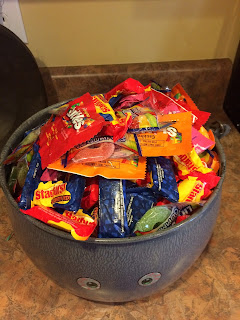DIY: Last Minute Halloween Costumes

Happy Halloween! Are you stuck for a last minute costume? I find myself reflecting on my childhood costumes as today's children prance around in store-bought costumes. When I was a kid, my mother bought me one, yes one , store-bought costume. It was cheap junk. She always said we could come up with something better at home. That year I was a princess, and the mask was frightening, hot, and I didn't wear it very long because of my glasses. I had one other store-bought, hand-me-down costume , but it actually was made up of two costumes. I was a skeleton, the outfit, and a clown, the mask. Back then, it was funny. Today a skeleton clown is frightening. I've tried to recall as many of my costumes as possible, but some years have faded in my memory. Unfortunately, I don't have pictures of these. There was a photograph of me in the cowboy costume, but I don't know what happened to it. Probably one of my siblings has it because all four of us were in the pictu...



